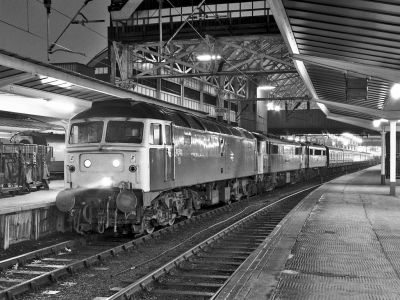Managing energy flow in railway systems

Manchester Piccadilly
By David Ingham from Bury, Lancashire, England (04024 Uploaded by oxyman) [CC BY-SA 2.0 (http://creativecommons.org/licenses/by-sa/2.0)], via Wikimedia Commons
Europe's electric mainline railway systems provide an important service to individuals and businesses. Energy management solutions can enhance their sustainability, and a large EU-funded consortium plans to deliver a roadmap for implementation.
No individual supplier, operator or infrastructure manager can develop a pan-European railway energy management system (REM-S). A consortium of 18 partners representing major stakeholders across Europe is working together on the EU-funded project MERLIN to provide a solution.
The task is quite challenging, but the team is well-organised and moving ahead. Partners characterised the main railway networks in Europe, defining infrastructures, sub-systems and components. As there are currently no applicable standards, scientists evaluated the standardisation and calibration of energy meters and data communication from on-board energy meters to smart grid components.
In order to get a better handle on the current situation, researchers developed a graphical depiction of overall energy flow. Energy consumption maps were made for the railway power supply systems of representative networks in Spain, France, Sweden and the United Kingdom.
Five case studies in four European countries are helping evaluate various aspects of improved energy management. The high-speed network from Paris to Lyon is included to evaluate the introduction of an energy storage system (ESS) to improve line capacity. Scientists are working on minimising power losses and enhancing punctuality and delivery during peak power demands in Swedish inter-city systems.
Introduction of an ESS to suburban service in Spain that already exploits rheostatic braking (converting kinetic energy into electrical energy) will be evaluated to enable more efficient traction energy. Finally, two scenarios from the United Kingdom are included, one to use electrified or diesel vehicles and one to implement new contractual arrangements.
Partners have developed the first draft of the reference architecture for the REM-S based on the Smart Grid Architecture Model. They have also defined the information exchange protocol between components, and defined the structure of the decision-making tool that will support fulfilment of REM-S objectives.
MERLIN is developing the components and management tools necessary for efficient energy resource management on European electric railways. Standardisation will make an important contribution to future development, implementation and effectiveness. Finally, optimised energy management for reduced consumption could lead to cost savings passed on to consumers in the form of reduced fares.
published: 2015-05-12

